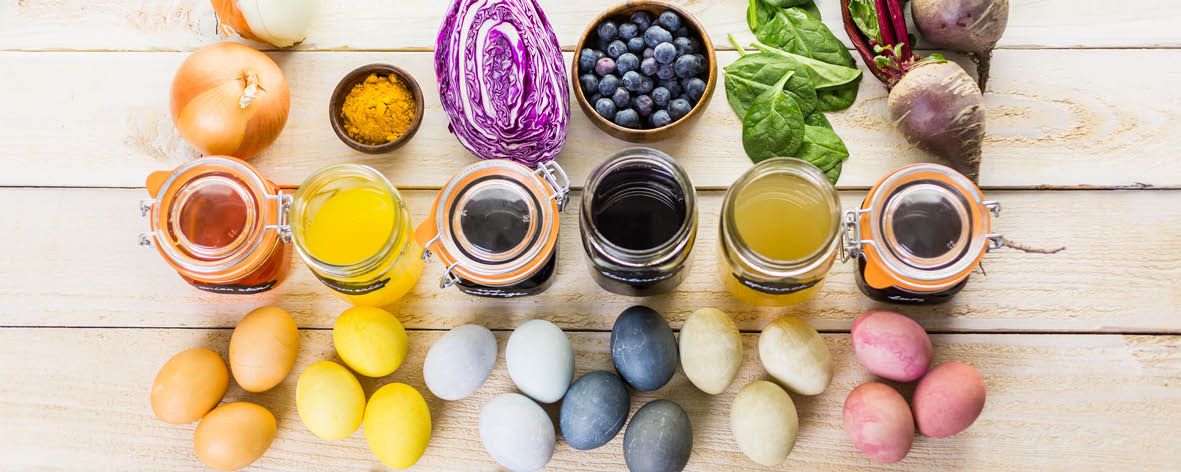How to make natural Easter egg dyes … using vegetables

Dyeing and decorating eggs is a favourite Easter tradition and a fun activity to do with the kids. You can use liquid food colouring but we love using natural options like vegetables because they create gorgeous, subtle natural colours. Using natural ingredients also provides a perfect opportunity for a science lesson for your children who will learn about the natural colours in foods.
For each cup of water add:
Blue colouring – add one cup of blueberries to the water when boiling eggs
Green colouring – add one cup of spinach to the water
Red or pink colouring – adding one cup shredded beetroot or one cup red onion skins to the water will give you red/pink eggs
Purple colouring – one cup of red cabbage is the perfect ingredient for a purple food colouring
Yellow – add two tablespoons of turmeric to the water to create yellow eggs
Orange – add one cup of brown onion skins for a subtle orange tinge
Methods
There’s two methods you can use to create naturally dyed eggs. You can start with raw eggs and cook them in a dye bath (water and dye matter). This method will result in more subtle colouring.
Alternatively you can begin by hard-boiling eggs (note you can use brown or white eggs but be aware that brown eggs will change the end colour result).
If you have access to different types of eggs (quail, goose, duck) you can create a stunning table centrepiece by incorporating a range of sizes.
Next make your dye. You can make separate batches of different colours or one large batch of a single colour. Follow the ratios above if making more or less dye.
Add the amount of water you need for the dye to a saucepan, then add the dye matter (onion skins, beetroot, etc.) and bring the water to the boil. When the water boils, drop the temperature to low, and simmer for 20 to 30 minutes.
Remove from the heat and allow the dye to cool down to room temperature before straining to remove the solids. Put the strained dye into a container and add one tablespoon of white vinegar per cup of strained liquid.
Now it’s time to dye the eggs. Arrange eggs in a single layer in a baking dish or container and carefully pour the cooled dye over them. Make sure they are completely submerged in dye.
Put the eggs in the dye into the fridge and chill until the desired colour is reached. If you want a more vibrant colour the trick is to give the eggs multiple soaks in the dye, making sure you dry them between each soak.
When you’re happy with the colour, remove the eggs from the dye and dry carefully. Store the eggs in the fridge until it’s time to eat them.

